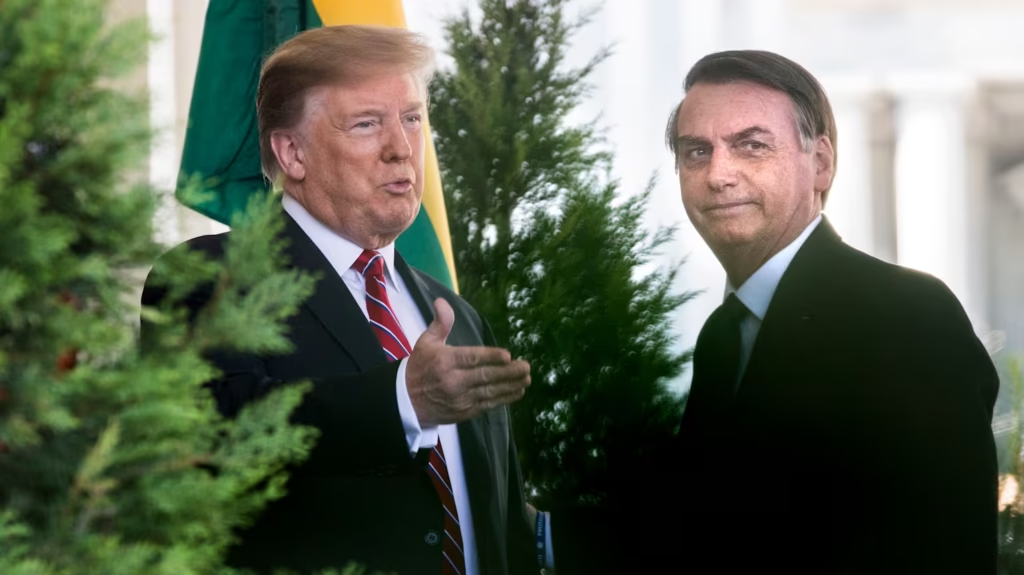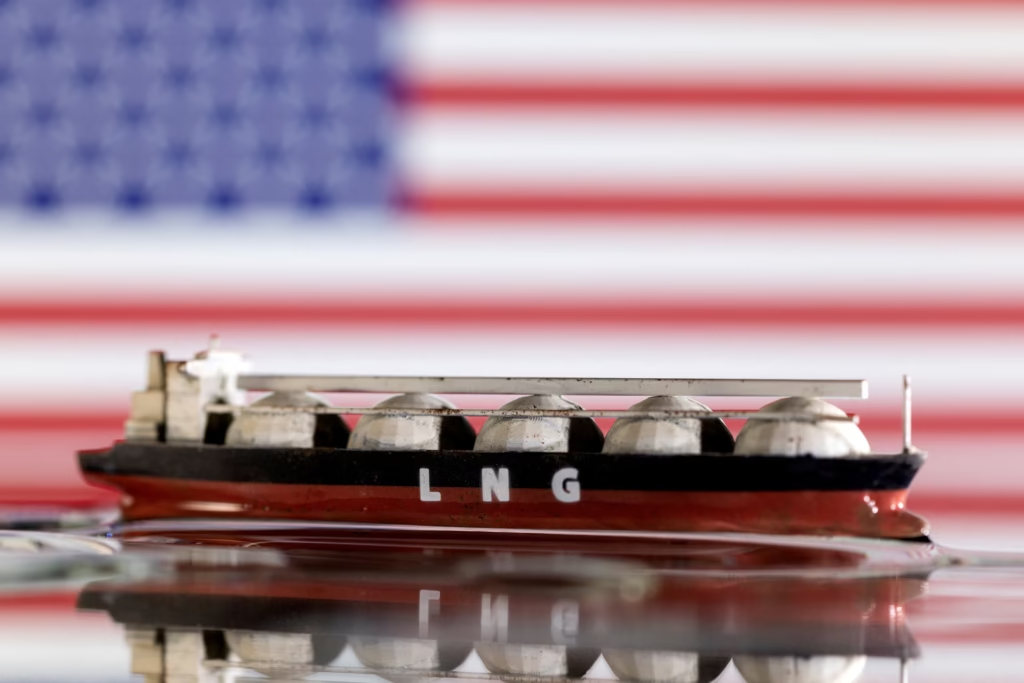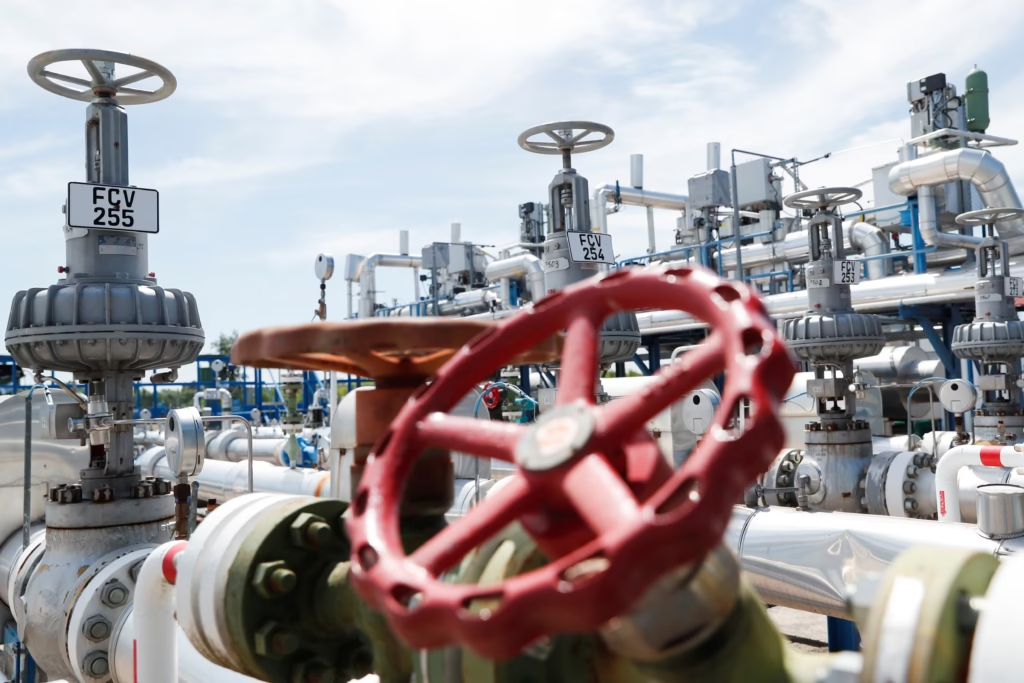What if the world’s biggest gas pipeline was up for grabs?
What if a billionaire with deep political ties wanted to buy it?
And what if Europe’s entire energy future depended on who wins the bid?
This isn’t some wild conspiracy—it’s happening right now.
With Russia’s gas supply crumbling, the U.S. is stepping in, pipelines are turning into billion-dollar poker chips, and the global energy game is being rewritten.
So, who’s really in control? And more importantly—who’s about to get rich?

Table of Contents
Pipelines, Power, and a Political Plot
1. The Nord Stream 1 pipeline, built to send Russian gas to Germany, was started by former German Chancellor Gerhard Schröder.

2. After kicking off the project and leaving office, Schröder landed a top seat at Russia’s state-owned gas giant, Gazprom.
3. Not stopping there, he also became chairman of Rosneft, Russia’s state oil company.
4. Rosneft, by the way, is the same company that built Nord Stream 2, another gas pipeline running under the Baltic Sea.
5. Schröder faced heavy backlash for working with Russian energy firms after backing Nord Stream.

Merkel’s Big Bet: Gas Over Nukes
6. After Japan’s Fukushima nuclear disaster, Chancellor Angela Merkel decided to ditch nuclear power and instead doubled down on Russian gas.

7. She shut down all 17 of Germany’s nuclear reactors, planning to make up for the energy gap with Russian natural gas.
8. The Nord Stream pipelines were designed to run under the Baltic Sea, skipping over countries like Ukraine.
9. The goal? Germany would secure 75% of its gas via these pipelines and even make extra cash selling leftovers to neighboring countries.

Trump Said “Nope” – and Pulled the Plug
10. During his first term, President Trump was totally against the Nord Stream projects.
11. In December 2019, he blasted Germany for “free-riding on U.S. security while becoming a hostage to Russian energy” and signed a law sanctioning companies involved in Nord Stream 2.

12. Officially, the U.S. said it was about stopping Germany from depending too much on Russia. Unofficially? It was also about keeping Europe as a customer for U.S. natural gas.
13. The U.S. had been investing in LNG (Liquefied Natural Gas) export facilities, eyeing Europe as a major buyer.
14. So when Germany wanted even more Russian gas—and planned to resell some in Europe—Trump wasn’t having it.

War, Sanctions, and a Supply Shake-Up
15. The Ukraine war broke out, and suddenly, Russian gas deliveries to Europe were slashed.

16. Europe had to scramble, turning to the U.S., Qatar, and other suppliers.
17. If and when the war ends, Europe could restart Russian gas imports—but probably not like before.
18. The EU is now building up its military, so over-relying on Russian energy would be a risky move.
19. Even though Russian gas is cheaper, Europe needs competition—so it’s now mixing in U.S. and Qatari gas.
20. Germany rushed to sign a 10-year deal with Qatar, but Qatar alone can’t fill Russia’s shoes.
21. The problem? 80% of Qatar’s gas is already locked in long-term contracts, meaning Europe can only get a limited share.
22. Before the war, Germany imported 71 billion cubic meters of Russian gas per year.
23. Even after Qatar expands production, it will only be able to add 20 billion cubic meters to the EU’s total supply.
24. So Europe needs extra gas from places like the U.S. and Israel to make up the difference.

The Nord Stream Plot Thickens…
25. The Nord Stream 1 and 2 pipelines were mysteriously blown up in September 2022 and haven’t been used since.

26. Out of four pipelines, three were totally destroyed—but one might be repairable.
27. Russia still sees Nord Stream as a crucial supply route for selling gas to Europe.
28. Currently, 60-70% of Russia’s gas exports to the EU go through Ukraine.
29. Ukraine made a lot of money charging Russia transit fees, but Nord Stream was designed to cut Ukraine out of the equation.
30. Ukrainian President Zelensky let the Russia-Ukraine gas transit deal expire on December 31, 2024, making things even trickier for Moscow.

31. Without those pipelines, Russia’s gas exports to Europe will take a major hit.
32. That’s why Nord Stream—despite being bombed—is suddenly back in the conversation.
33. The Swiss-based company that owns Nord Stream 2 (a Gazprom subsidiary) has filed for bankruptcy.

34. Of the four pipelines, the only one still intact belongs to Nord Stream 2.
35. The final bankruptcy ruling is expected in May 2025, and once that happens, Nord Stream 2 could go up for auction.
36. Here’s where it gets interesting—American billionaire Stephen Lynch is eyeing the chance to buy it.

37. Lynch is a longtime Trump ally and major donor.
38. In December 2024, he quietly asked the U.S. Treasury Department for permission to buy Nord Stream 2.
39. But there’s a problem—the pipeline is considered a Russian asset, and U.S. laws currently ban Americans from purchasing it.
40. That’s why Lynch is lobbying to get those restrictions lifted.

41. He’s no stranger to Russian deals—back in 2022, he got the U.S. Treasury to approve his buyout of Sberbank’s Swiss subsidiary.
42. And in 2007, he bought Russian oil giant Yukos at auction, flipped it to Deutsche Bank, and made a fortune.
43. Lynch believes Nord Stream 2 is worth $11 billion but hopes to snatch it up for a bargain.

44. But here’s the catch—even if he buys it, a pipeline without gas is just a pile of metal.
45. If Russia doesn’t send gas and Germany doesn’t take it, owning Nord Stream 2 means nothing.
46. From Russia’s point of view, reopening Nord Stream 2 is a win because it would allow Moscow to sell gas without paying Ukraine’s transit fees.
47. So, Russia has little reason to oppose its reactivation.
48. Germany, on the other hand, officially opposes reopening Nord Stream 2. But if energy prices skyrocket post-war… that stance might change.

The Future of Europe’s Gas: Who’s in the Lead?
49. Right now, Europe’s gas supply mix is shaping up to be 30% from Russia, 40% from the U.S., 20% from Qatar, and 10% from Israel.
50. Unlike Russia, the U.S., Qatar, and Israel don’t have direct pipelines to Europe.
51. That means around 70% of Europe’s future gas supply will arrive as LNG (liquefied natural gas), shipped across the ocean.
52. Trump has been aggressively expanding U.S. LNG exports.
53. The U.S. is ramping up gas sales not just to Europe but also to Japan, Taiwan, South Korea and even countries in Southeast Asia, Latin America, and Africa.
54. Over 40 brand-new projects are in development to help countries transition to natural gas.
55. These projects take about three years to complete, meaning new supplies will start flowing in by 2025.
Alphazen Insights

So… Is the U.S. Taking Over Russia’s Gas Market?
It sure looks like it. With Russia struggling to sell gas and U.S. exports booming, the global energy map is being redrawn. But here’s the bigger picture—it’s not just about replacing Russia.
Countries that never relied on natural gas before are jumping in fast. The U.S. and Qatar aren’t just filling Europe’s gap—they’re hunting for brand-new customers. Qatar, basically an island in gas terms, is locked into LNG. The U.S.? Same deal. Without pipelines, LNG is king, and the market is exploding.
So, what happens next? Will Russia claw back its market share? Or is this the start of an all-out global gas grab? One thing’s for sure: The energy war is heating up, and LNG is taking over.
Discover more from Alphazen Dynamics
Subscribe to get the latest posts sent to your email.



